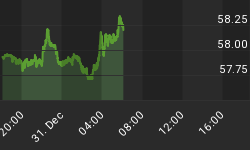Below is an excerpt from a commentary originally posted at www.speculative-investor.com on 1st July 2012.
Major peaks in the gold market tend to follow major shifts in the monetary backdrop -- from a high to a low monetary inflation rate -- with a lag of more than two years. It probably happens this way because it takes years for the effects of a large increase in the money supply to ripple through the economy. In other words, the markets and the economy will still be reacting to a period of rapid/accelerating money-supply expansion for more than two years after the monetary trend has reversed. From a practical standpoint this is useful information because it pegs the second half of next year as the earliest time for a major gold peak.
The first half of the 1970s provides us with a good example of the relationship between the major monetary trend and the major gold trend. At the end of 1974 the gold price reached a peak that would be followed by a 2-year downward trend, whereas a major downward trend in the money-supply (TMS) year-over-year growth rate commenced near the end of 1972.
The second half of the 1970s provides us with an even better example. As evidenced by the first of the following charts, the TMS year-over-year growth rate began trending downward in early 1977 and had turned negative by early 1979. That is, by early 1979 the US was experiencing monetary DEFLATION. But as the second of the following charts shows and as everyone knows, the gold price rose during 1977-1978 and then accelerated upward in dramatic fashion during 1979. The ultimate peak was reached in January of 1980 -- three years after the monetary trend had turned gold-bearish and one year after the US had begun to experience monetary deflation.
As an aside, Paul Volcker is now widely credited with having ended the inflation of the 1970s, but when Volcker was appointed Fed chief in August of 1979 the US was already immersed in monetary deflation. This means that a commodity collapse was "baked into the cake" PRIOR to Volcker taking the top job at the Fed . Whoever was appointed Fed chief in August of 1979 would now have the credit for killing inflation, because by that time inflation was already dead. Commodity speculators just hadn't realised it yet.


In 1979, gold was in a bubble and during an investment bubble almost any news will be interpreted as a reason to buy the investment in question. There's a revolution in Iran? Buy gold! 52 Americans have been taken hostage in Iran? Buy a lot of gold! These pieces of news have nothing to do with gold's fundamental value? Doesn't matter, just buy! There was a similar bubble in the oil market during the first half of 2008. During that period almost any news was viewed as a reason to buy oil even though there was clear-cut evidence at the time that oil demand was declining relative to oil supply.
During the current gold bull market we haven't experienced anything like the sentiment that drove the spectacular advance in the gold price in 1979 or the spectacular advance in the oil price in 2008. That's still to come.
We'll end this discussion by returning to the comment we made in the opening paragraph, which is that the relationship between the monetary backdrop and gold pegs the second half of next year as the EARLIEST time for a major gold peak. This comment is based on the fact that the most recent peak in the TMS year-over-year growth rate occurred in August of 2011. If the gradual tapering-off in the TMS growth rate since last August (refer to the following chart for details) evolves into a multi-year downward trend, then a major peak in the gold price would be likely during the second half of 2013 or during 2014. However, if the TMS growth rate returns to the vicinity of its 2011 peak within the next two years or remains in double figures for another 1-2 years, then the likely timing of gold's next major peak will shift into the second half of this decade.

We aren't offering a free trial subscription at this time, but free samples of our work (excerpts from our regular commentaries) can be viewed at: http://www.speculative-investor.com/new/freesamples.html
















